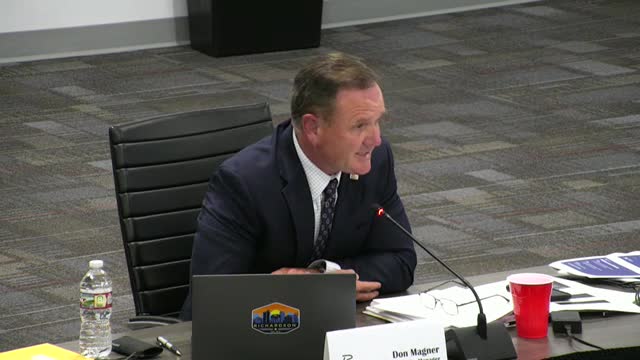City plans bold development to attract corporate tenants
July 08, 2024 | Richardson, Dallas County, Texas

This article was created by AI summarizing key points discussed. AI makes mistakes, so for full details and context, please refer to the video of the full meeting. Please report any errors so we can fix them. Report an error »

In a recent government meeting, officials discussed the evolving landscape of real estate in North Texas, particularly in Richardson, as the area adapts to post-COVID realities. The conversation highlighted the need for a strategic development plan that aligns with market demands, particularly from corporate tenants seeking assurances about housing options for their employees.
Key points raised included the importance of providing more residential units close to workplaces, as high occupancy rates in existing developments indicate a strong demand for housing. Corporations are increasingly looking for locations that offer a vibrant community and accessibility, rather than isolated developments. The proposed plan aims to create a dynamic environment that meets these expectations.
Officials noted that the entertainment sector is also shifting, with venues now requiring higher foot traffic and density to thrive. The examples of successful developments, such as Legacy West, were cited as models for the type of growth that could attract both corporate and entertainment investments.
Economic development representatives expressed optimism about the plan, stating it would enhance Richardson's competitiveness in attracting new businesses. The integration of public transportation options, particularly DART, was emphasized as a critical factor in supporting increased residential density and improving accessibility for future residents.
Concerns regarding public safety and the impact of increased housing units were addressed, with officials confirming that discussions with police and fire services indicated no significant issues. The development process was clarified, assuring that while the new plan adds flexibility for future projects, it does not restrict developers to a single type of development, allowing for a mix of residential, office, and retail spaces.
Overall, the meeting underscored a proactive approach to urban planning in Richardson, aiming to create a balanced and appealing environment for both residents and businesses in the post-pandemic era.
Key points raised included the importance of providing more residential units close to workplaces, as high occupancy rates in existing developments indicate a strong demand for housing. Corporations are increasingly looking for locations that offer a vibrant community and accessibility, rather than isolated developments. The proposed plan aims to create a dynamic environment that meets these expectations.
Officials noted that the entertainment sector is also shifting, with venues now requiring higher foot traffic and density to thrive. The examples of successful developments, such as Legacy West, were cited as models for the type of growth that could attract both corporate and entertainment investments.
Economic development representatives expressed optimism about the plan, stating it would enhance Richardson's competitiveness in attracting new businesses. The integration of public transportation options, particularly DART, was emphasized as a critical factor in supporting increased residential density and improving accessibility for future residents.
Concerns regarding public safety and the impact of increased housing units were addressed, with officials confirming that discussions with police and fire services indicated no significant issues. The development process was clarified, assuring that while the new plan adds flexibility for future projects, it does not restrict developers to a single type of development, allowing for a mix of residential, office, and retail spaces.
Overall, the meeting underscored a proactive approach to urban planning in Richardson, aiming to create a balanced and appealing environment for both residents and businesses in the post-pandemic era.
View full meeting
This article is based on a recent meeting—watch the full video and explore the complete transcript for deeper insights into the discussion.
View full meeting
